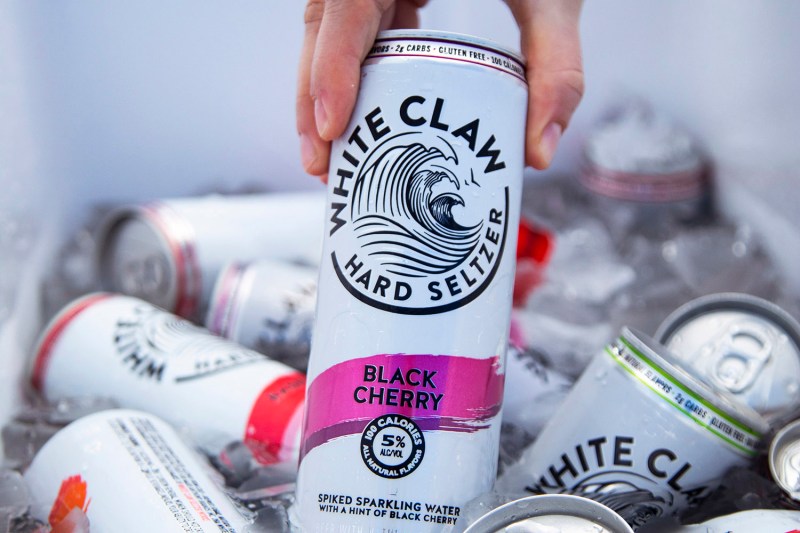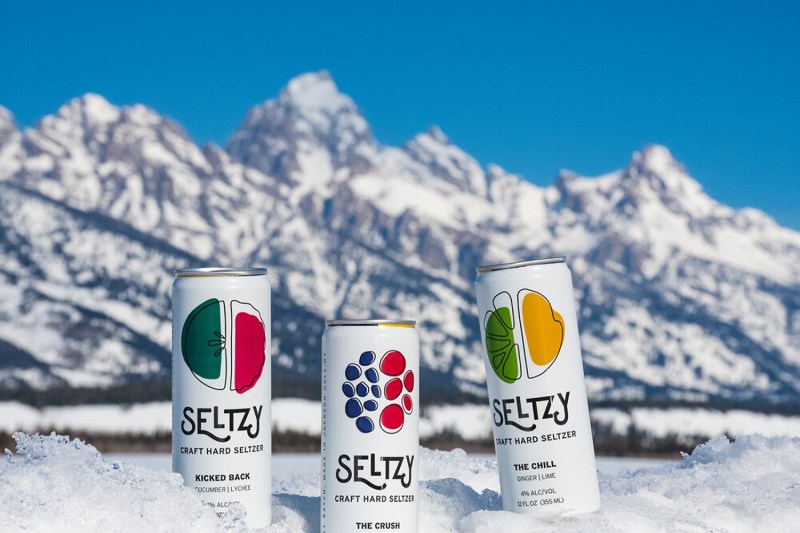
Hard seltzer continues its emphatic surge in the drinks market and it’s starting to trend toward being even harder. Back in 2019 (remember stuff before 2020?), Pabst blew the White Claw door open by dropping its Stronger Seltzer. Clocking in at 8% ABV (alcohol by volume), it was a giant among the 5% ABV pack, an imperial seltzer with about as much alcohol as the heftiest IPAs.
Only recently have more brands looked to follow suit. Call it year 2020’s still-lingering effects on our collective psyche (which call for stiffer drinks) or a move to appeal to an even wider audience. Whatever the reason, it is happening. After all, the biggest player in the game is now on board.
Last month, White Claw released a higher-octane line of seltzers dubbed Surge. It follows the likes of Truly (with its Truly Extra line) and a few others that are looking to grab even more of what is now a pretty massive market share. Gordon Ramsay is on the verge of releasing his take on the stuff, dubbed Hell’s Seltzer and coming in at 5.6% ABV. It’s not that alcoholic, per se, but to be starting there as opposed to the previous industry standard of four-to-five-percent alcohol by volume does say something.
Why the Uptick in Booze Content?

It may be to appeal to even more men, and beer-drinking men especially. After all, craft beer continues to appeal to more men than women, with a recent poll suggesting that the category is divvied up between approximately 70% men and just 30% women. The number was even more male-dominated until the recent popularity of craft beer styles like sours, fruit ales, lighter lagers, and more, which appeal more to both.
Hard seltzer has conducted a masterful campaign in terms of cross-gender marketing. Recent reports suggest the stuff is still being consumed almost exactly equally by men and women. What’s more, the backstory here is the added popularity of the larger format, pint-size can, which has increasingly housed stronger beers like double IPAs. If hard seltzer is going to win over the stronger beer drinkers of the world, it’s becoming poised to do just that.
This makes even more sense considering that more and more craft breweries are debuting hard seltzers. In the last year, we’ve seen them turned out by the likes of New Belgium, 10 Barrel, 21st Amendment, Roadhouse Brewing, and many, many more. To maintain craft appeal, they need to, at least to some extent, do as craft does.
While There Are Easy-to-Drink Seltzers, They Still Have to Be Versatile

Stone Brewing just released its own hard seltzer, called Buenavida. It’s currently only in the California brewery’s bistros and taprooms at the moment, but the plan is to distribute, with an initial bottling going out this summer in southern California. It’s currently a 5% ABV product, but that could change going forward.
“Just like beer, there are now seltzers that are easy drinking, low ABV options, and we are starting to see the higher ABV options as well,” says Stone CEO Maria Stipp. “Currently, anything 6% and above is only 3% of the category. It’s fair to say the seltzer category was born from a desire for lighter, session-able alternatives.” Stone is very much entering with that in mind, but like beer, the seltzers will have to stay versatile.
“I personally think this easy-to-drink approach will keep the positive trends going, but there are always people who want higher ABV and we’re happy to see the category evolving in the same way beer has,” Stipp adds.
Part of it is just appealing to weekenders wanting a bit more of a buzz. Conventional hard seltzers are nice in that they align to some extent with wellness principles and also allow you to function, even if you’re cracking a few midday. Some people, though, want the buzz without having all of the requisite liquid.
In case you’ve been under a rock (or quarantined for more than a year), hard seltzer is big business. It was estimated to be worth $4.5 billion in 2020 alone. By 2027, the category is forecast to be worth $14.5 billion. It’s fair to say that, just as in the vast lager category within craft beer, the majority of offerings will remain in the 4-5% ABV range. But clearly, there’s a push for more potent seltzer and we’re likely to see more offerings as we head into summer.


